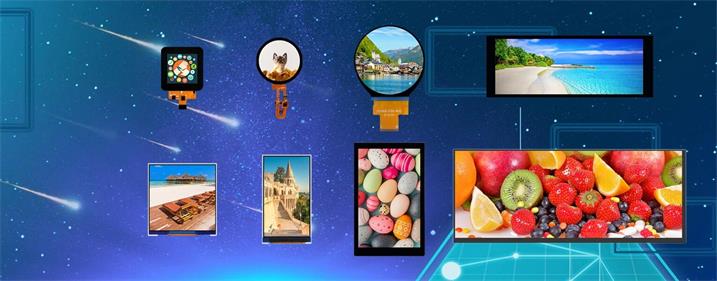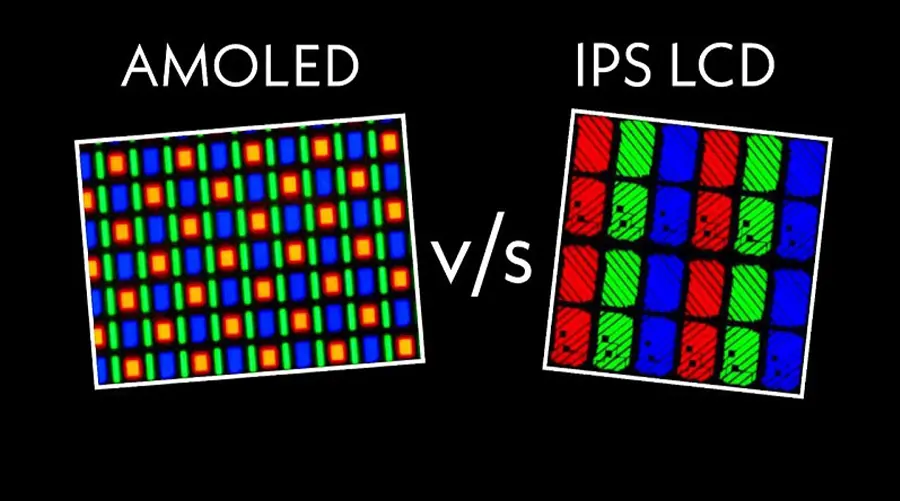Understand the working principle, technical advantages and application scenarios of TFT LCD Display, as well as its development prospects in future display technology. Compare the differences between TFT LCD and OLED and choose the right display.
In the field of electronic display technology, TFT LCD Display (Thin Film Transistor Liquid Crystal Display) is known for its excellent performance and wide range of applications. This article deeply analyzes the working mechanism, technical advantages, and diversified application scenarios of TFT LCD Display Module, and explores its competitiveness in the market.
Working Principle and Key Technologies of TFT LCD Display
Thin Film Transistor Liquid Crystal Display (TFT LCD Display) uses thin film transistors (TFT) to precisely control the liquid crystal layer to achieve independent switching of each pixel, ensuring fast response and high-definition display of the screen.
Technical Advantages of TFT LCD Panel
Color Expression: Thin Film Transistor Liquid Crystal Display (TFT LCD) can display rich and realistic colors, bringing a visual feast to users.
High Resolution: Supporting multiple resolutions from HD to UHD to meet the needs of different users for image clarity, thin film transistor liquid crystal display technology provides a clear and delicate visual experience.
Low energy consumption: Compared with traditional LCDs, thin-film transistor liquid crystal display panels are better at saving energy, helping to extend the battery life of electronic devices.
Diversified application scenarios of TFT LCD Module
Case study: Tablets: For example, a high-end tablet computer from a well-known brand uses TFT Display, which ensures the fineness of the image and the smoothness of operation, and is deeply loved by consumers.
In-vehicle display system: In a study, TFT LCD Module maintained high brightness under extreme weather conditions, providing drivers with clear navigation information.
Other application scenarios include medical equipment, industrial control panels, smart home devices, smart watches, health tracking bracelets, handheld game consoles, portable navigation devices, and industrial handheld terminals.
Comparison between TFT Displays and OLED Displays
TFT Display and OLED Display have their own advantages. TFT LCD Displays have advantages in cost-effectiveness, service life, and brightness control, while OLED Displays perform better in contrast, viewing angle range, and screen thickness. Consumers should weigh their personal preferences and budgets when making choices.
Future Development Trends of TFT LCD Screen
Looking forward to the future development prospects of TFT LCD, we can explore from the following aspects:
Higher resolution and lower energy consumption: With the continuous advancement of technology, thin film transistor liquid crystal screens are expected to provide more delicate display effects while achieving lower energy consumption.
Wider color gamut coverage: In order to bring users a richer visual experience, new thin film transistor liquid crystal display screens may increase the color gamut range.
Thinner and lighter design: With the continuous innovation of production technology, thin film transistor liquid crystal display screens are moving towards thinner and lighter directions.
Competition and alternative technologies
Competition of OLED technology: Although TFT LCD still has a dominant market position, the development of OLED technology cannot be underestimated. OLED offers higher contrast and wider viewing angles, and may replace TFT LCD in some applications in the future.
Challenges of emerging display technologies: For example, emerging display technologies such as MicroLED and MiniLED are also under development, which may bring new challenges to TFT LCD.
Milieu en duurzaamheid
Gebruik van milieuvriendelijke materialen: Naarmate het milieubewustzijn toeneemt, wordt er bij de productie van TFT-schermen meer aandacht besteed aan het gebruik van recyclebare of biologisch afbreekbare materialen.
Optimalisatie van het productieproces: Om de impact op het milieu te verminderen, kan het productieproces van TFT LCD's worden geoptimaliseerd om het energieverbruik en de afvalproductie te verminderen.
Hoe kiest u de juiste TFT LCD-schermmodules?
Bij het kiezen van TFT LCD-schermmodules zijn de volgende factoren cruciaal:
Doel: De juiste grootte en resolutie kiezen op basis van het toepassingsscenario.
Bijvoorbeeld: slimme huizen, industriële regelindustrie, medische industrie, etc.
Selecteerbare maat:7 inch tft lcd-scherm
De horizontale schermresolutie is 800*480, 1024*600, 1024*768, 1920*1080
Verticale schermresolutie is 720*1280, 800*1280
Bijvoorbeeld: spelcomputers, videodeurbellen, thermostaten, kleine apparaten en ander slim meubilair, beveiliging, consumentenelektronica
Selecteerbare maat:4,3 inch tft lcd-schermresolutie is: 480x272, 800x480
3,5 inch tft lcd-schermresolutie is: 320x240, 640×480, 320x480
Budget: Zoek het meest kosteneffectieve product binnen uw budget.
Merk: Kies een gerenommeerd merk om de productkwaliteit en aftersales-service te garanderen.
Laatste artikelen
-
Waarom 1-2" AMOLED's de sleutel zijn tot AR/XR in 2025
Waarom 1-2 inch AMOLED-schermen essentieel worden in de AR/XR-hausse (2025 Industry Insight)body {f
-
Understanding OLED Display Technology: Principles, Performance & Applications
OLED (Organic Light Emitting Diode) displays are a class of self-emissive display technology in whic
-
From Wearables to AR Glasses – How OLED Displays Are Redefining Visual Experiences in 2025
By 2025, OLED (Organic Light-Emitting Diode) technology has transitioned from luxury smartphone disp
-
LCD-schermen met uitgerekte staven voor de detailhandel: verhoog de omzet en betrokkenheid in supermarkten
Ontdek hoe LCD-schermen met uitgerekte staven de marketing in de supermarktschappen verbeteren, de verkoop stimuleren en de kosten verlagen.
-
Uitgerekte LCD-oplossingen voor restaurants en horecagelegenheden
Uitgerekte LCD's bieden strakke, zeer heldere displays die perfect zijn voor restaurantmenu's en horecagelegenheden.




